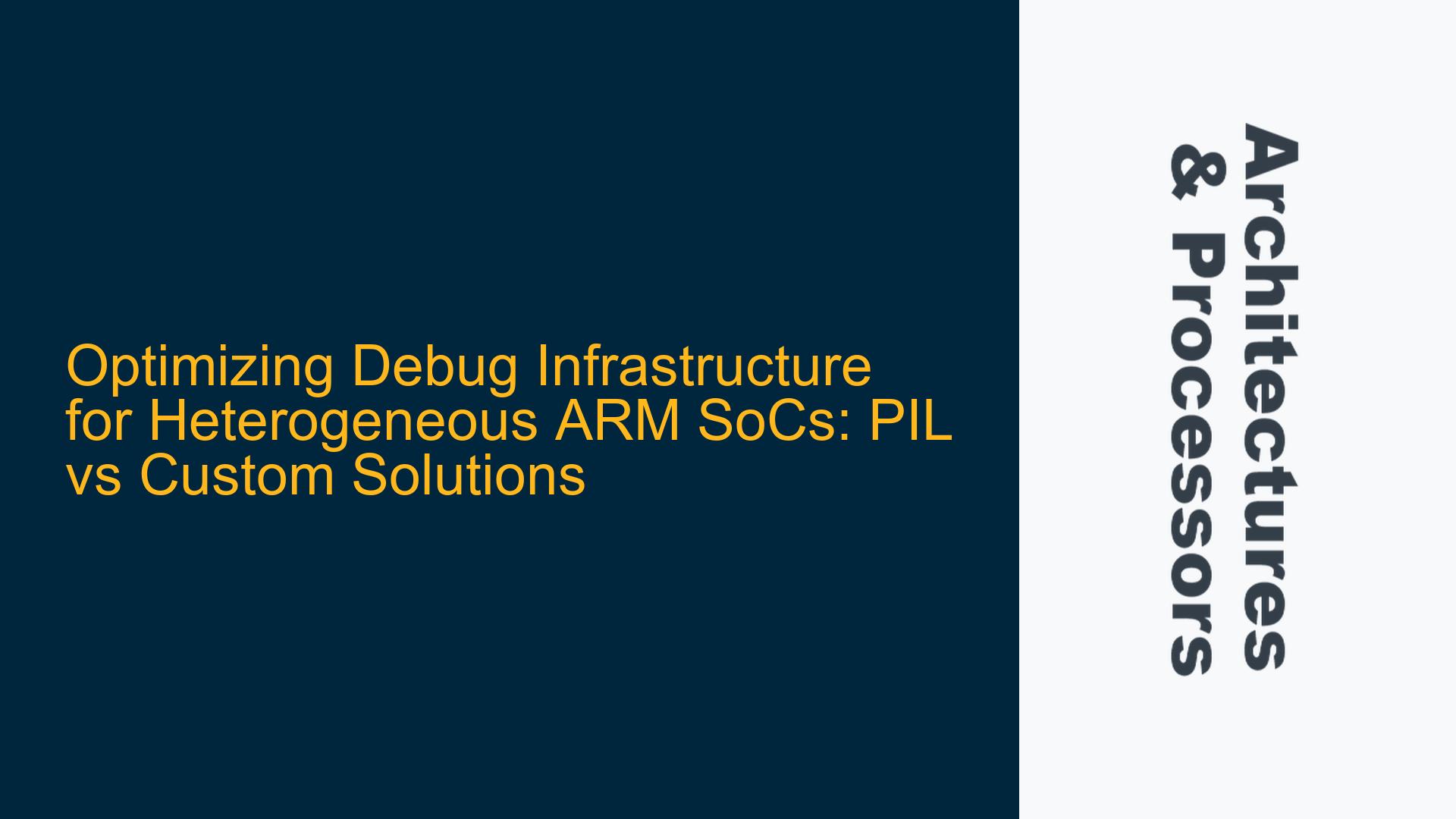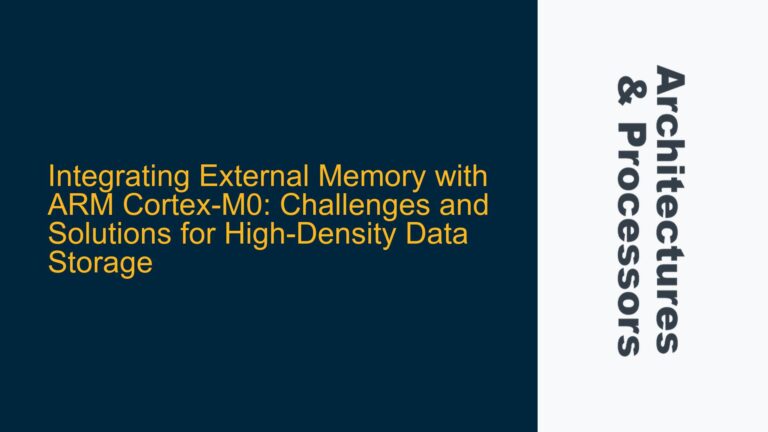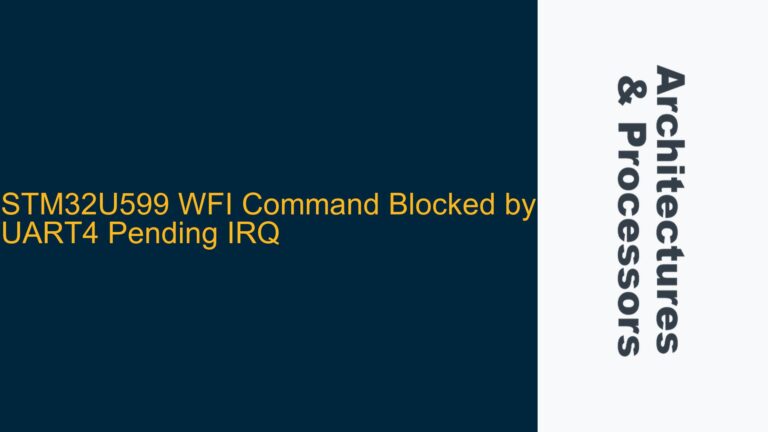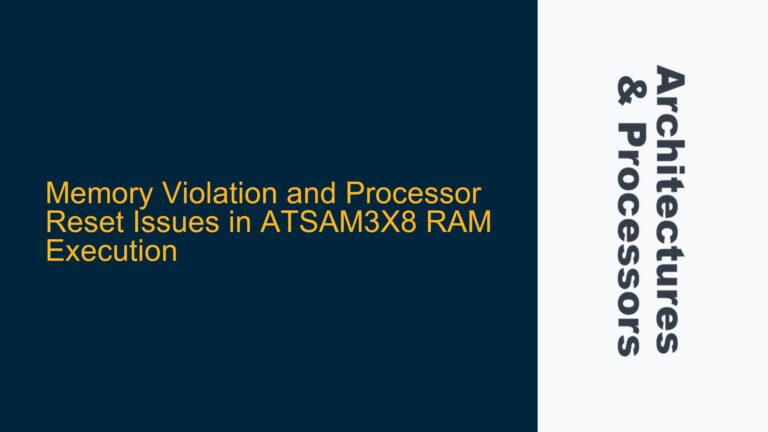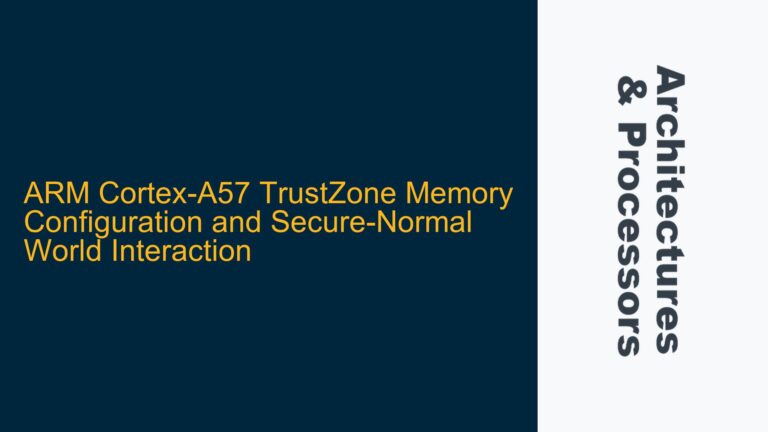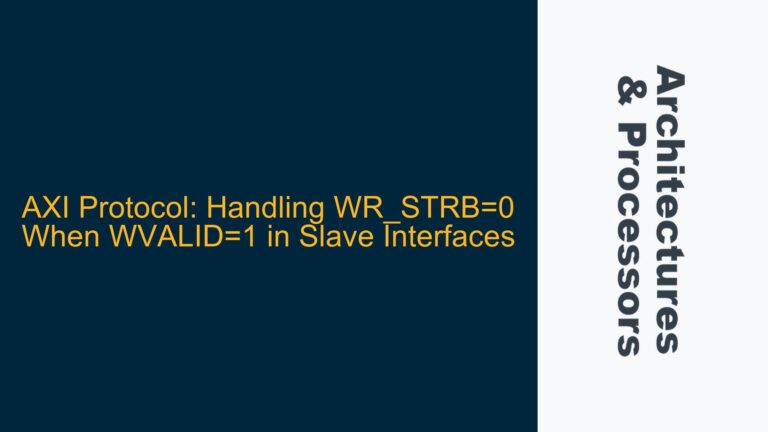ARM Cortex-M3, R5, and A-Series Debug Integration Challenges
When designing a heterogeneous ARM-based SoC with multiple cores such as Cortex-M3, Cortex-R5, and Cortex-A series processors, one of the critical decisions revolves around the debug infrastructure. The debug infrastructure is essential for ensuring visibility into the system during development, testing, and post-silicon validation. The primary challenge lies in deciding whether to use the Processor Integration Layers (PILs) provided by ARM, which come pre-integrated with Embedded Trace Macrocell (ETM) and Cross Trigger Interface (CTI) components, or to build a custom debug infrastructure from raw cores.
The PILs offer a standardized approach to integrating debug components, ensuring compatibility and reducing the risk of integration errors. However, they may introduce redundancies, especially in a heterogeneous system where different cores have varying debug requirements. On the other hand, a custom debug infrastructure allows for a more tailored solution, potentially reducing redundancy and improving regularity across the design. However, this approach requires a deep understanding of the ARM CoreSight architecture, ETM, and CTI components, as well as the ability to manage the complexities of integrating these components across different core types.
The decision between using PILs or building a custom debug infrastructure is not trivial. It involves trade-offs between development time, risk, and the ability to meet specific design requirements. The choice will significantly impact the overall system performance, debug capabilities, and the ease of integration with other system components.
Redundancies in PILs and Custom Debug Infrastructure Complexity
One of the primary concerns when using PILs is the potential for redundancies. PILs are designed to provide a standardized interface for integrating debug components, which can lead to unnecessary overhead in a heterogeneous system. For example, the ETM and CTI components in the PILs may not be fully utilized by all cores, leading to wasted resources. Additionally, the PILs may include features that are not required for a specific application, further increasing the complexity and resource usage.
In contrast, building a custom debug infrastructure allows for a more streamlined solution. By starting with raw cores, designers can selectively integrate only the necessary debug components, reducing redundancy and optimizing resource usage. However, this approach requires a deep understanding of the ARM CoreSight architecture and the ability to manage the complexities of integrating ETM and CTI components across different core types. This can be particularly challenging in a heterogeneous system where different cores may have different debug requirements and interfaces.
Another consideration is the impact on system performance. The debug infrastructure can have a significant impact on the overall system performance, particularly in terms of bandwidth and latency. PILs are designed to provide a standardized interface, which may not be optimized for specific performance requirements. In contrast, a custom debug infrastructure can be tailored to meet specific performance requirements, potentially improving system performance.
Implementing a Hybrid Debug Infrastructure for Heterogeneous ARM SoCs
Given the challenges associated with both PILs and custom debug infrastructures, a hybrid approach may offer the best of both worlds. This approach involves using PILs for certain cores where the standardized interface provides significant benefits, while building a custom debug infrastructure for other cores where a more tailored solution is required.
The first step in implementing a hybrid debug infrastructure is to conduct a thorough analysis of the debug requirements for each core in the system. This analysis should consider factors such as the type of debug information required, the frequency of debug access, and the impact on system performance. Based on this analysis, designers can determine which cores would benefit from the use of PILs and which cores would benefit from a custom debug infrastructure.
For cores where PILs are used, it is important to carefully configure the ETM and CTI components to ensure that they meet the specific debug requirements of the core. This may involve disabling certain features that are not required, or reconfiguring the components to optimize performance. For cores where a custom debug infrastructure is used, designers must ensure that the ETM and CTI components are properly integrated and configured to meet the specific debug requirements of the core.
In addition to configuring the debug components, designers must also consider the overall system architecture and how the debug infrastructure will interact with other system components. This includes considerations such as the placement of the debug components within the system, the routing of debug signals, and the impact on system performance. It may also involve the use of additional components such as debug bridges or multiplexers to manage the flow of debug information between different cores and the external debug interface.
Finally, it is important to thoroughly verify the debug infrastructure to ensure that it meets the required functionality and performance. This includes both simulation-based verification and post-silicon validation. Simulation-based verification should include a comprehensive set of test cases that cover all aspects of the debug infrastructure, including the interaction between different cores and the external debug interface. Post-silicon validation should include real-world testing to ensure that the debug infrastructure performs as expected under actual operating conditions.
In conclusion, the decision to use PILs or build a custom debug infrastructure for a heterogeneous ARM-based SoC involves trade-offs between development time, risk, and the ability to meet specific design requirements. A hybrid approach that combines the use of PILs with a custom debug infrastructure may offer the best solution, providing the benefits of both standardized and tailored solutions. By carefully analyzing the debug requirements for each core, configuring the debug components appropriately, and thoroughly verifying the debug infrastructure, designers can ensure that the system meets the required functionality and performance.
